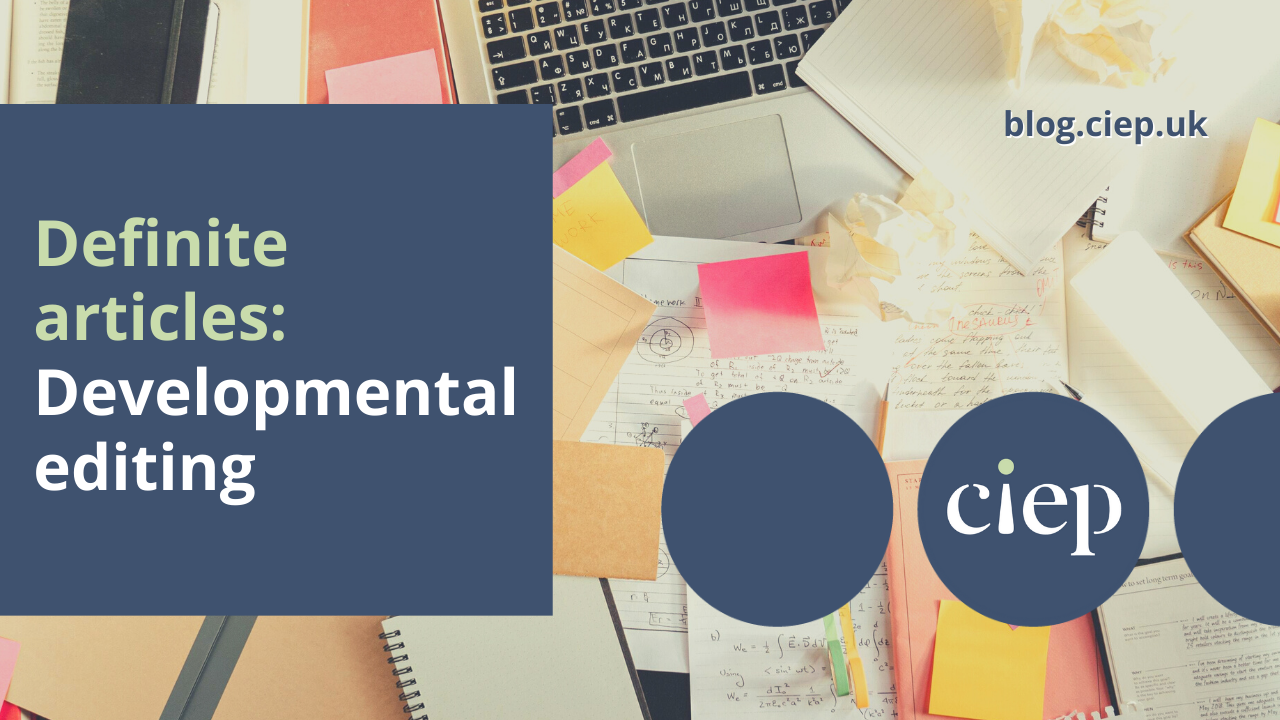Welcome to ‘Definite articles’, our pick of recent editing-related internet content, most of which are definitely articles. This time, our theme is developmental editing.
The CIEP has recently released two guides about developmental editing: one covering fiction, the other, non-fiction. Let’s look at each type in turn.
Fiction
Sophie Playle, the author of our guide on developmental editing for fiction, recently released three connected CIEP blogs that answered key questions about the subject. The first covered giving feedback, the second was about definition and boundaries, and the third looked at process.
After these three Q&A-style blogs, how about a Q&A between three developmental editors? Sangeeta Mehta, Susan Chang and Julie Scheina’s Zoom discussion about the practicalities of the role is transcribed on Jane Friedman’s website and is well worth a read.
Over on the ACES website, Tanya Gold offers a survey of the conversations an editor needs to have with an author before tackling a developmental edit.
Finally, Susan DeFreitas sets out three critical questions an author needs to ask before drafting or revising a novel. These questions offer some valuable pointers for developmental editing, too.
Non-fiction
In her CIEP guide on developmental editing for non-fiction, Claire Beveridge recommends a detailed guide to the subject by Gary Smailes. For Editors Canada, Paul Buckingham has written a useful shorter overview of the process.
If you’re looking for a particular specialism, ACES has covered medical developmental editing; The Editing Podcast has talked to a developmental editor of academic writing; and Geoff Hart has written for An American Editor about creating effective outlines, an article that’s particularly relevant to technical text.
Book recommendations
If you’d like a longer read than a web page can offer but are unsure where to start, book reviews are a good way in. For fiction developmental editing, Tanya Gold can recommend a stack of useful books. In non-fiction, the classic work is Scott Norton’s Developmental Editing, and on the ACES website you can review what the book covers before deciding whether it’s worth investing in.
And to see developmental editing within the larger process of creating a book, as well as hearing directly from editors, What Editors Do, edited by Peter Ginna, is a great read. You can read a review of it on the Editors Canada website.
 About the CIEP
About the CIEP
The Chartered Institute of Editing and Proofreading (CIEP) is a non-profit body promoting excellence in English language editing. We set and demonstrate editorial standards, and we are a community, training hub and support network for editorial professionals – the people who work to make text accurate, clear and fit for purpose.
Find out more about:
Photo credits: papers and sticky notes by cottonbro studio on Pexels; bookshelves by Huỳnh Đạt on Pexels.
Posted by Sue McLoughlin, blog assistant.
The views expressed here do not necessarily reflect those of the CIEP.


